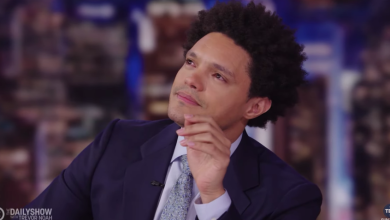When Jewish Artists Wrestle With Antisemitism

Antisemitism has such a long, violent history that it seems absurd to claim it’s getting worse. Compared with when? And yet, there’s something about our current moment that feels different.
Consider a recent Sunday. I woke up to news reports that two men were arrested at Penn Station with weapons, a swastika armband and a social media history of threats to attack a synagogue. After taking a shower, I opened my dresser to find my Kyrie Irving T-shirt. The Brooklyn Net was returning to the N.B.A. that evening after being suspended for tweeting a link to a documentary that cast doubt on the Holocaust.
I didn’t expect getting dressed in the morning to turn into a test of loyalties between my favorite basketball team and my murdered ancestors, but here we are.
That night, when I arrived at Barclays Center, scores of people belonging to what the Southern Poverty Law Center labels a hate group were handing out pamphlets with the blaring headline “The Truth About Antisemitism.” I opened Twitter and saw Elon Musk was making fun of the Anti-Defamation League and Ye was tweeting again. He had kicked off the recent cycle of discourse by leveling violent threats against Jews
Quantifying antisemitism right now by numbers of hate crimes is useful, but doesn’t capture the peculiar anguish and human complexities of its day-to-day pervasiveness. That’s a job better suited to artists, and more than any year in memory, some of our most accomplished ones have taken up the challenge, from the biggest names in comedy (Dave Chappelle, Amy Schumer) to the most celebrated storytellers in theater and film, like Tom Stoppard and Steven Spielberg. What resonates most in this impressive body of work are the Jewish artists exploring the challenge of antisemitism, and while they started these projects years ago, their hard-earned pessimism now seems uncomfortably prophetic.
The thorniest recent work on these issues was the “Saturday Night Live” monologue by Dave Chappelle. He poked fun at Ye and Irving while speaking to the antisemitic idea of a Jewish conspiracy in Hollywood. In between myriad jokes, he shrugged off this stereotype as an understandable thought best not verbalized. One of the maddening traps of modern antisemitism is that it takes a source of pride — Jewish success in the arts, the rare field where we were welcome — and makes it seem sinister. This old tactic got a new hearing.
There are a lot of Jews in Hollywood, Chappelle observed mischievously, before undercutting the comment with a joke that called the trope that they control show business “a delusion.” Unlike the blunt social media posts of Ye and Irving, this set was a work of art, elusive and layered, displaying finesse and paradox. It’s a prickly kind of funny with corkscrew punch lines that tickled the mind and bothered the conscience. (“If they’re Black then it’s a gang, if they’re Italian it’s a mob, but if they’re Jewish it’s a coincidence and you should never speak about it.”)
Art can be formally beautiful and morally ugly. Despite what you have heard, good comedy can be built on lies as easily as on the truth. This is what makes Chappelle’s set so slippery: His storytelling and gravitas are so magnetic that you can miss how far he goes in making the old slur of a Jewish conspiracy seem reasonable. He whitewashed Irving’s tolerance for Holocaust denial with one good line. With another, he says you can’t “blame Black people” for Jewish pain, erecting a straw man with deftness. To suggest, as he does, that it’s dangerous for him to say “the Jews” is tiresome hyperbole.
For as much controversy as this set provoked, it was also predictable. How often have we seen Chappelle bring up celebrity transgression, and then defend, mitigate and complicate it, while inviting us to admire the feat? This is his move. There’s no wondering where he will come down on the latest scandal. We know.
The Projectionist Chronicles a New Awards Season
The Oscars aren’t until March, but the campaigns have begun. Kyle Buchanan is covering the films, personalities and events along the way.
- Gotham Awards: At the first official show of the season “Everything Everywhere All at Once” won big.
- Governors Awards: Stars like Jamie Lee Curtis and Brendan Fraser worked a room full of academy voters at the event, which is considered a barometer of film industry enthusiasm.
- An Indie Hit’s Campaign: How do you make “Everything Everywhere All at Once” an Oscar contender? Throw a party for tastemakers.
- Jennifer Lawrence: The Oscar winner may win more accolades with her performance in “Causeway,” but she’s focused on living a nonstar life.
EARLIER THIS YEAR, I wrote about the Jewish tendency to turn antisemitism into comedy. But there’s another coping mechanism that we like to talk about less: looking the other way. When asked about Chappelle’s monologue, Jerry Seinfeld diplomatically told The Hollywood Reporter that “the subject matter calls for more conversation.” When asked about it as a guest on “The Late Show,” Jon Stewart only became earnest when he pleaded for free speech. What’s striking about these responses from star comics is that they seem to be more interested in calling for debate than engaging in it.
Then again, I get it. I’ve stayed quiet when peers wrote things that seemed, if not indifferent to Jewish pain, then at least to be applying double standards to it. I gave them the benefit of the doubt or concluded that a call-out would be counterproductive. But saying nothing in the face of such moments exacts its own cost. It eats at you. Several Jewish artists have been making work that explores such decisions with a skeptical eye.
In “The Patient,” a sly, suspenseful FX series from Joel Fields and Joe Weisberg, creators of “The Americans,” a therapist played by Steve Carell awakens to find himself chained to the bed of a serial killer looking for help with his mental health. The title is a reference to this maniac as well as the way his therapist responds.
The killer says he was looking for a therapist who is Jewish, a specific request that goes uncommented on. Small moments tip you off to a tolerated culture of antisemitism. In a flashback, the therapist, Alan, spots a swastika on a poster and, instead of making a fuss, keeps walking.
Now he has no such option. Imprisoned by a captor who wants something from him, he is faced with the urgent question of how to fight back. He chooses to use his skills in mental health to help his oppressor get better. The deeper he gets in dialogue, though, the more uncomfortable Alan grows, especially after he teaches the murderer the Kaddish, the Jewish prayer for the dead, and then sees it being used to mourn his latest victims.
In many ways, the relationship at the center of “The Patient” is a metaphor for both the lengths Jews will go to extend empathy toward their oppressors and for the existential toll that takes. Playing a man wracked by guilt, grief and doubt, Carell is extremely subtle illustrating how accommodation can be justified and yet wear you down. We also see scenes in his head of him talking to a shrink (David Alan Grier) who asks why he doesn’t fight back, attack the killer. To which Alan replies: “I’m using what I have.” Grier, a figment of his imagination, flashes a look that suggests he doesn’t believe that.
Similarly, “The Fabelmans” and “Armageddon Time,” two personal movies by Jewish directors dramatizing their own childhoods, grapple with the question of what weapons Jews have. In both, sensitive boys facing antisemitism at school struggle with how to stand up for themselves.
“The Fabelmans” isn’t a movie about being Jewish so much as it is suffused with Jewishness. But when its young protagonist, Sammy Fabelman, moves to California in the 1960s, he’s confronted with Aryan boys who mock his religion and with gentile girls intrigued by it. He happily prays with one girl but puts up a fight with the bullies, who at first seem like the cartoon villains from early Spielberg movies. The most dramatic way Sammy pushes back is by putting his antagonists in a movie. After filming his classmates on a trip to the beach, the footage, shown to the whole school, makes one bully look ridiculous and another glamorous, bigger than life. Oddly, being romanticized by the Jewish kid he beat up rattles the bully more than any insult. His discontent in the face of this attention is the most baffling section in the movie, one that has the ring of a point being made. But what is the point?
Is the antisemite feeling shame? If so, Spielberg is working hard to extend empathy. But this exchange also rattles Sammy. When the bigot demands to know why Sammy made him look like a star, the response sounds pained and unsure: “Maybe I did it to make the movie better?”
It’s a shockingly unsentimental moment to find in a Spielberg movie, one in which the young version of himself learns that pleasing the crowd might require turning an antisemite into the hero. No one loves the movies more than Spielberg, and in this intimate, morally probing film, he shows how they can move, inspire and reveal the truth. But in these more hardheaded scenes, he also makes it clear that their impact can be unpredictable, and like comedy, they can deceive just as deftly.
In “Armageddon Time,” a humbler, realistic and affectingly bleak portrait of the struggles of a young Jewish kid, James Gray digs into his 1980s Queens upbringing in the story of an 11-year-old boy named Paul Graff whose grandfather is the son of a refugee who fled pogroms in Europe. The patriarch tells him that changing his name (from Grasserstein) will help him in life. This same man urges him to speak up when other students make racist comments to a peer. These are the competing messages he grows up with: assimilate or fight back.
A friendship with a Black classmate also makes clear to Paul how not all inequities are the same, that his privilege protects him in a way that other minority groups don’t experience. In a time when Black and Jewish communities are pitted against each other by entertainers like Ye and others, this movie feels exceedingly topical and depressing. It painfully dramatizes how antisemitism can lead Jews to overlook other injustices, protect your tribe and harden your heart to the plight of others.
As with Spielberg’s movie, the new play by Tom Stoppard, “Leopoldstadt,” is being described as his most personal as well as a reckoning with his Jewish identity, which in his case he didn’t understand until middle age. It’s also one of his worst plays: intellectually thin, overly familiar, blandly generic. If the way you tell the audience it’s the 1920s is by a woman dancing the Charleston, you’ve become too comfortable with cliché. And yet, this sprawling portrait of a half century in the life of a Jewish family from Vienna is drawing sold-out crowds of weeping audiences.
I suspect the reason is the timely and heavy-handed portrait of Jewish complacency and denial. We see this most nakedly in the stand-in for the playwright, a comic writer born Leopold Rosenbaum who now goes by Leonard Chamberlin (a name that evokes the prime minister famous for appeasement). In 1955, Chamberlin is glibly naïve about the Holocaust, a patriotic fool set up for tears when remembering the horrors of the Nazis. The play ends with a roll call of the dead. Of course, the audience cries.
TWO THINGS STAND OUT about these dramas, whether onscreen or onstage: The first is that none of the Jewish protagonists are exactly triumphant in the face of antisemitism. Therapy, the movies, assimilation — nothing saves them. These characters are ambivalent, morally compromised or far worse. When it comes to their ability to protest an antisemitic culture, pessimism reigns.
The second is how much these works look to the past, exploring the current moment through a historical lens. (That includes Bess Wohl’s play “Camp Siegfried,” a drama about a 1938 Nazi youth camp on Long Island whose themes are clearly meant to echo with today.) Even the contemporary “The Patient” borrows its most blunt power from flashbacks to the moral simplicity of concentration camps. Looking at history can be a useful way to understand the present, but it can also be a way to evade it. One wonders what Stoppard would come up with if he dramatized the more subtle Jewish denial of the cultural world he came up in, where he flourished as a playwright whose religion never seemed to come up. Or how Spielberg or Gray would capture the conflicts of Jewish life now.
As usual, comics are the artists taking the earliest and most direct approaches. David Baddiel, a British comic, is receiving glowing reviews this month for a BBC documentary version of his book “Jews Don’t Count” that castigates the double standards applied to prejudice against Jews in progressive spaces today. Marc Maron’s next special, which recently taped in New York, begins a series of jokes on the increased prominence of conspiracies about Jews by saying that in this polarized country, antisemitism is one thing that brings everyone together. At the Kennedy Center Honors, Sacha Baron Cohen, in character as the antisemite Borat, skewered Ye and sang a brief parody version of U2’s “With or Without You,” switching the lyrics to “With or Without Jews.”
Amy Schumer is one of the few sketch comics to dig into antisemitism today, lampooning the tentativeness our culture has for calling it out in the new season of “Inside Amy Schumer.” She imagines a workplace harassment seminar where everyone is hypersensitive to all kinds of slights except antisemitic ones. It’s a premise that not only counters the trope of a Jewish conspiracy but also taps into the paranoia of being gaslit by an entire culture. It hints at what a Jewish “Get Out” could look like.
Part of the resilience of antisemitism is its resistance to critique. Jewish artists are obviously not going to end the lie that they control show business by making more movies, plays, TV shows or sketches about it. But they can illuminate its impact and capture the complex damage it does to the psyche. That matters. For a certain kind of Jew, art can be its own religion. And one lesson we keep learning and forgetting is that the greatest art is much better at portraying conflicted minds than changing them.





